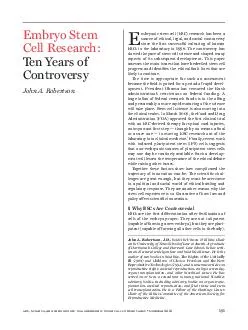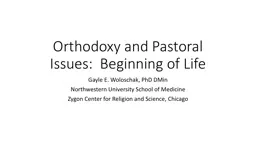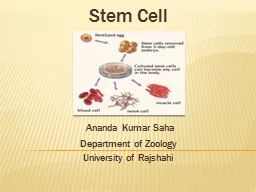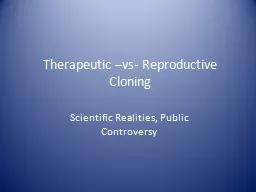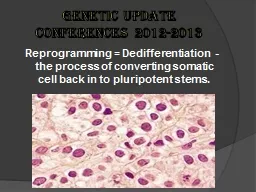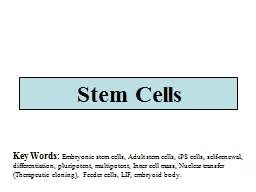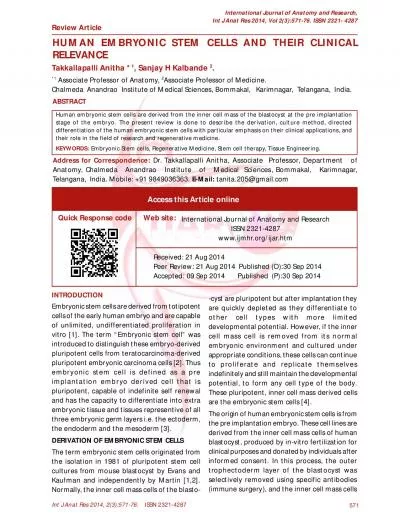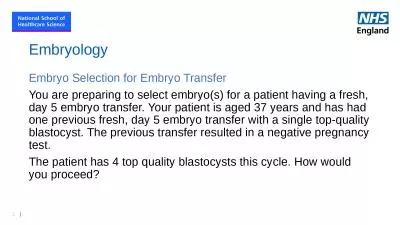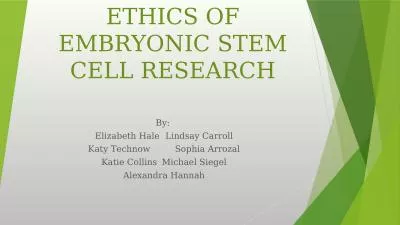PDF-law science and innovation the embryonic stem cell controversy summer Embryo Stem Cell
Author : ellena-manuel | Published Date : 2015-03-10
Robertson mbryonic stem cell ESC research has been a source of ethical legal and social controversy since the 64257rst successful culturing of human ESCs in the
Presentation Embed Code
Download Presentation
Download Presentation The PPT/PDF document "law science and innovation the embryonic..." is the property of its rightful owner. Permission is granted to download and print the materials on this website for personal, non-commercial use only, and to display it on your personal computer provided you do not modify the materials and that you retain all copyright notices contained in the materials. By downloading content from our website, you accept the terms of this agreement.
law science and innovation the embryonic stem cell controversy summer Embryo Stem Cell: Transcript
Download Rules Of Document
"law science and innovation the embryonic stem cell controversy summer Embryo Stem Cell"The content belongs to its owner. You may download and print it for personal use, without modification, and keep all copyright notices. By downloading, you agree to these terms.
Related Documents

